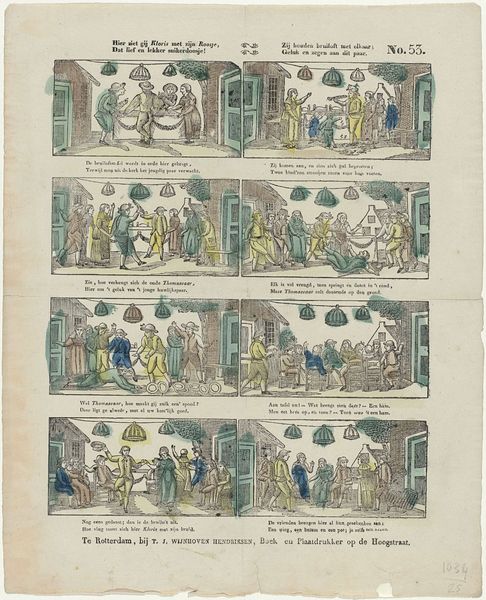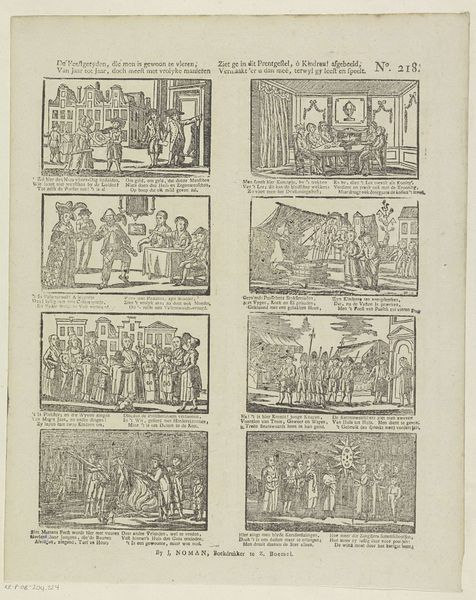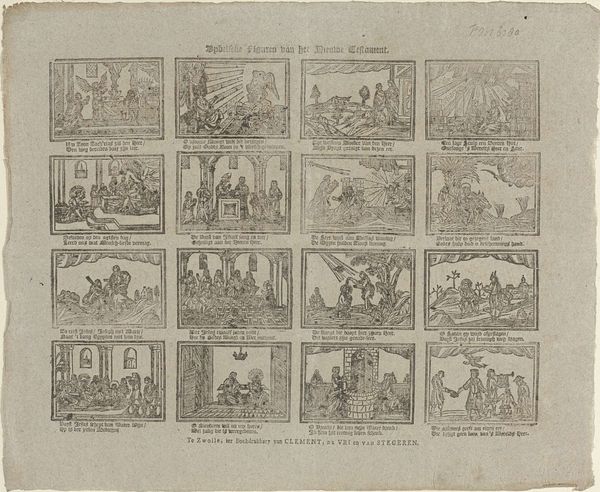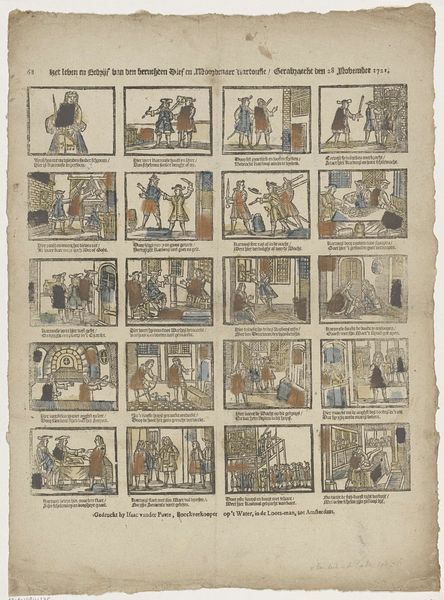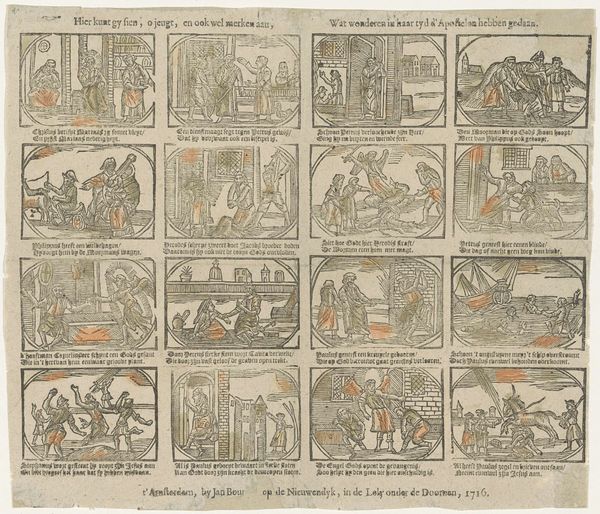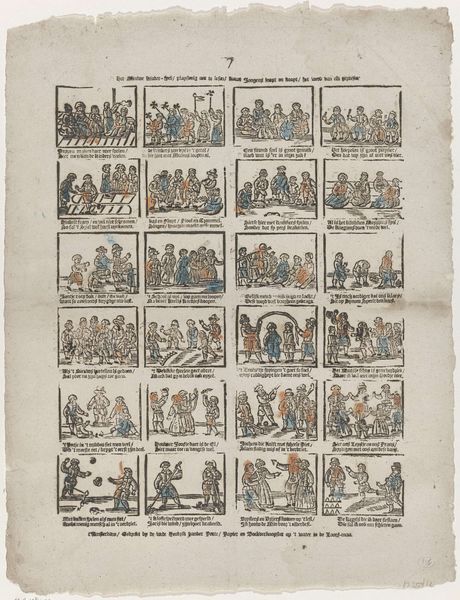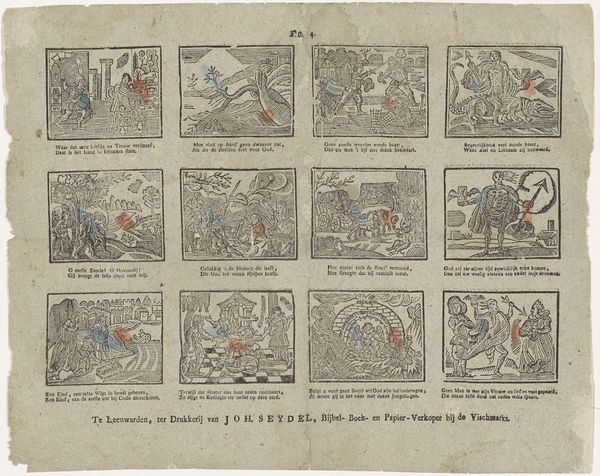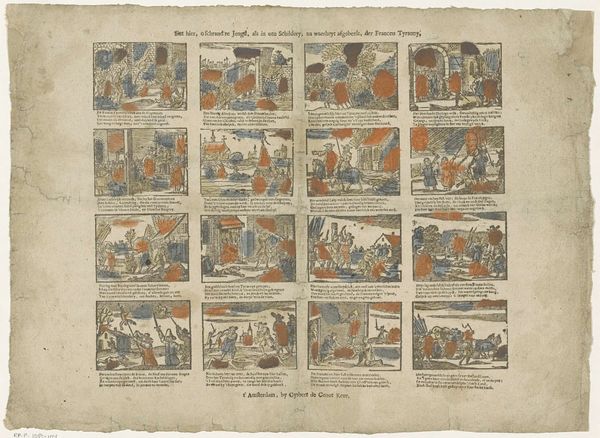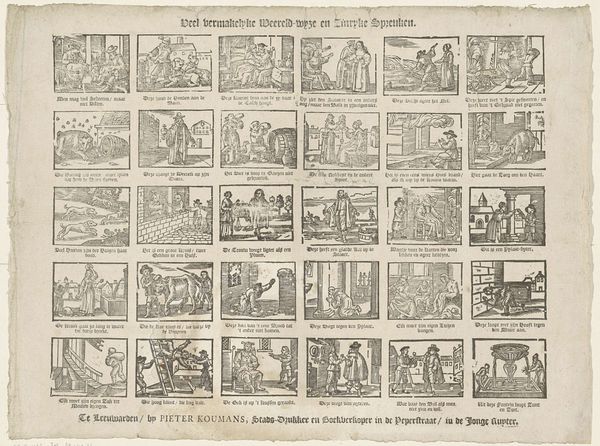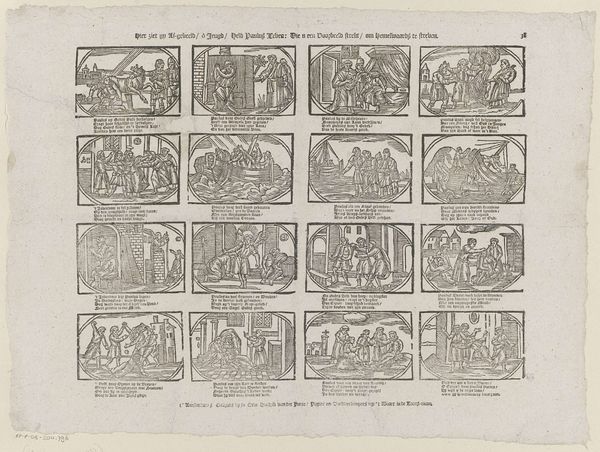
Hier ziet gy af-gebeeld / ô jeugd / held Paulus leven: Die u een voorbeeld strekt / om hemelwaards te streeven 1767 - 1793
0:00
0:00
ervenhendrikvanderputte
Rijksmuseum
Dimensions: height 309 mm, width 405 mm
Copyright: Rijks Museum: Open Domain
Curator: This piece strikes me as remarkably dense; so many vignettes crammed into a single sheet. Is it meant to be read sequentially, like a comic strip? Editor: Exactly! What you’re seeing is an engraving titled "Hier ziet gy af-gebeeld / ô jeugd / held Paulus leven: Die u een voorbeeld strekt / om hemelwaards te streeven," roughly translated to “Here is depicted/ O youth / the life of the hero Paul: which serves as an example/ to strive heavenward". Produced between 1767 and 1793 by the Erven Hendrik van der Putte, it depicts the life of Saint Paul in a series of scenes. It’s currently held in the Rijksmuseum collection. Curator: "Erven Hendrik van der Putte" – so, it’s not by a single hand but the product of a workshop, or a family perhaps. I wonder about their methods, the division of labor... did one person draw, another engrave, a third print? What materials were readily available, influencing the dimensions and character of the piece? Editor: I see your interest in the production aspect! But look at how it served a public function: presenting Paul’s life as an exemplar for young people, instilling religious values. Notice how the scenes progress from persecution to conversion to, ultimately, sainthood. Each step accompanied by didactic text below. Curator: The subtle color washes draw the eye—it is almost too subtle! It gives the print more visual clarity, highlighting figures within each individual circular or square panel. Was it the printing firm who added the colors, or a later intervention by another workshop or owner? The application seems almost hurried, which lends it certain energy! Editor: I'm struck by how Baroque conventions adapt to the limitations of print. Consider how the spatial compression, the somewhat theatrical gestures of figures, reflect an engagement with religious drama, with communicating spiritual ideals in a format accessible to a broader audience. Curator: And beyond that intended purpose, consider how accessible engraving must have been as a technique and process. The paper, the tools, the application of color–its relative ubiquity points to a wider culture of art making outside of purely academic painting or sculpture! Editor: Certainly, and thanks to its existence within a particular social moment. This single sheet serves as both a devotional and historical record. It's an artifact with immense layers! Curator: Yes, the interplay between intention and production creates such compelling work, whether you approach it with religious or historical perspectives! Editor: Indeed, each perspective unveils new insights.
Comments
No comments
Be the first to comment and join the conversation on the ultimate creative platform.
